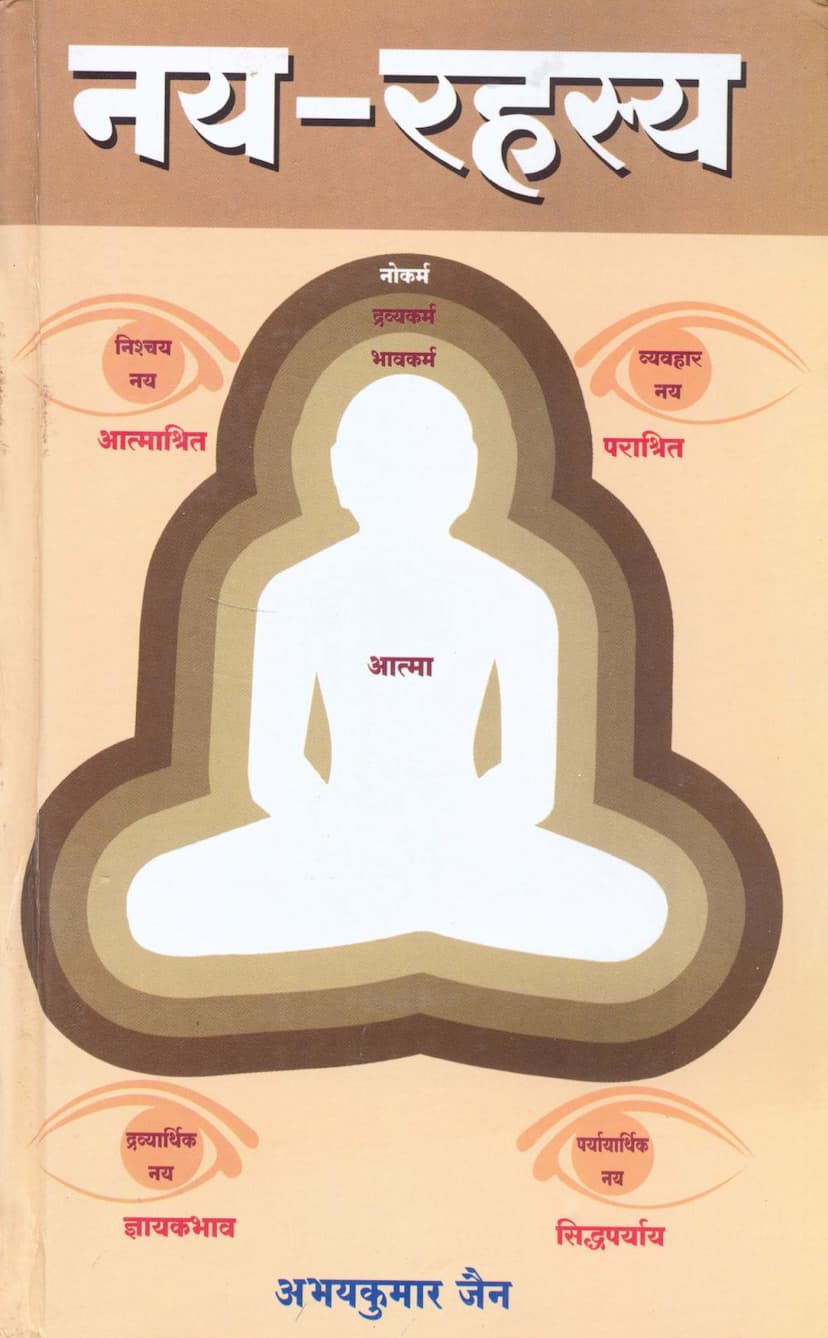Nay Rahasya
Added to library: September 2, 2025

Summary
Here's a comprehensive summary of the Jain text "Nay Rahasya" by Abhaykumar Jain, based on the provided pages:
Overview and Purpose:
"Nay Rahasya" (The Secret of Nayas) is a Jain text authored by Abhaykumar Jain, aiming to elucidate the complex philosophical concept of 'nayas' within Jainism. The book is published by Todarmal Granthamala, Jaipur, and supported by the Jain Adhyatma Academy of North America. The primary goal of the book is to clarify the often misunderstood topic of 'nayas' (viewpoints or perspectives) which are crucial for understanding the Jaina scriptures (Agamas) and achieving spiritual liberation.
Core Concepts Explained:
The book delves deeply into the nature and application of 'nayas', particularly focusing on the distinction and interplay between:
- Nishchay Nay (Absolute/Ultimate Viewpoint): This perspective focuses on the inherent, unchanging, pure, and self-reliant nature of the soul (Atma) in its true essence. It describes the soul as purely a knower (jñayakbhava), devoid of any karmic or physical attributes. It aligns with the ultimate reality of the soul.
- Vyavahar Nay (Conventional/Practical Viewpoint): This perspective deals with the soul's current state and its interactions within the empirical world. It describes the soul in its conditioned state, influenced by karma and worldly associations. This viewpoint acknowledges the soul's experiences of pleasure and pain, its worldly relationships, and its actions in the cycle of birth and death. It is considered a stepping stone or a means to understand the Nishchay Nay.
The text further categorizes 'nayas' based on their essence:
- Atmashrit (Self-reliant): These relate to the soul's intrinsic nature, primarily aligning with Nishchay Nay.
- Parashrit (Dependent on others): These relate to the soul's interaction with external factors, aligning with Vyavahar Nay.
The book also touches upon the concepts of Dravyarithik Nay (Substantial Viewpoint), which focuses on the eternal, substantial aspect of reality, and Paryayarithik Nay (Modal Viewpoint), which focuses on the transient, changing modes or states of reality. The text emphasizes that understanding these 'nayas' is essential for correctly grasping the teachings of Jainism and progressing on the path to liberation.
Context and Inspiration:
The book is a direct response to the confusion and societal divisions that arose within the Jain community due to differing interpretations of 'nayas', particularly the Nishchay-Vyavahar distinction. The author, Pandit Abhaykumar Jain, was inspired by the discourses of Pujya Gurudev Shri Kanji Swami, who played a pivotal role in reintroducing and explaining these profound spiritual concepts. The book is also seen as a complementary work to Dr. Hukmichand Bharill's "Paramabhavaprakashak Nayachakra," expanding upon its foundational principles.
Key Themes and Arguments:
- Resolution of Conflict: The book aims to resolve the societal disputes that arose from the misinterpretation of 'nayas' by providing clear and systematic explanations.
- Authentic Jain Adhyatma: It emphasizes the importance of understanding Jain spirituality as described in the "Paramagams" of great Acharyas like Kundkundacharya, as interpreted by revered gurus like Shri Kanjiswami.
- Importance of Nayas: The text argues that a correct understanding and application of 'nayas' are vital for true spiritual progress and the welfare of both the individual and the community. Without a proper grasp of 'nayas', even scripture study can lead to misunderstanding and division.
- Author's Expertise: Pandit Abhaykumar Jain is presented as a recognized expert in the field, having taught extensively on 'Nayachakra' and compiled his extensive notes into this work.
- Theological Underpinnings: The book draws heavily from the teachings of revered Jain Acharyas and the profound spiritual insights of Pujya Gurudev Shri Kanjiswami, emphasizing the path of liberation through self-realization.
- Practical Application: The text aims to provide practical guidance for spiritual seekers to navigate the complexities of Jain philosophy and apply these principles in their lives.
Structure and Content (from the provided index and excerpts):
The book is structured to systematically explain the topic of 'nayas'. The detailed table of contents reveals a comprehensive exploration, including:
- Introduction to Nay knowledge and its necessity.
- General nature of Nayas and their distinction from Pramana (valid knowledge).
- In-depth analysis of Nishchay and Vyavahar Nayas, their definitions, subjects, controversies, and relationship.
- Exploration of Dravyarithik and Paryayarithik Nayas.
- Discussion of seven fundamental Nayas (Naigama, Sangraha, etc.).
- Explanation of various classifications of Nayas (3 types, 6 types, 10 types, 47 types).
- Detailed examination of subtypes like Sthool, Sukshma, Apurn, Purn, etc.
- Elucidation of key concepts like Jainaabhas (fallacious viewpoints), Pakshat Krant (transcending partial viewpoints), Agam vs. Adhyatma perspectives on Nayas, and the role of 'Syadvada' and 'Anekanta'.
- The book also includes a section on the author's personal journey and inspiration, acknowledgments, and contributions from supporters.
In essence, "Nay Rahasya" serves as a guide to unlock the deeper philosophical truths within Jain scriptures, empowering readers to discern the correct perspectives necessary for spiritual advancement, guided by the rich tradition of Jain Adhyatma.